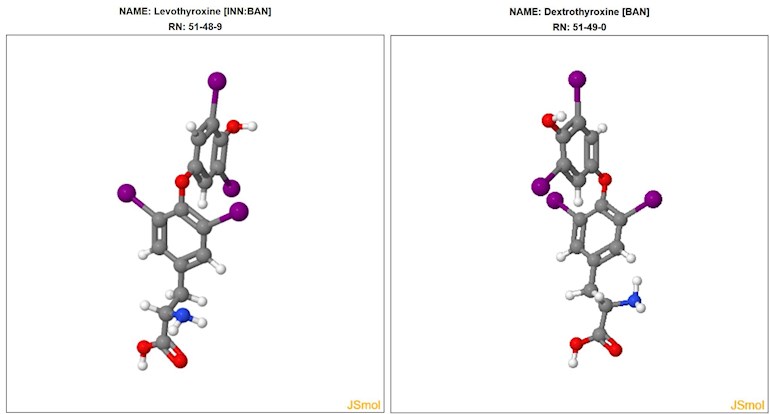The picture attached to the post shows the two forms of thyroxine:
Levothyroxine (on the left) and Dextrothyroxine (on the right).
All tablets called thyroxine (or, of course, levothyroxine) are as shown on the left.
The structures are identical but they are twisted differently. For all us ordinary folk, dextrothyroxine might as well not exist.
[ This was posted as we have had several questions about the difference between levothyroxine and thyroxine, if any. ]

